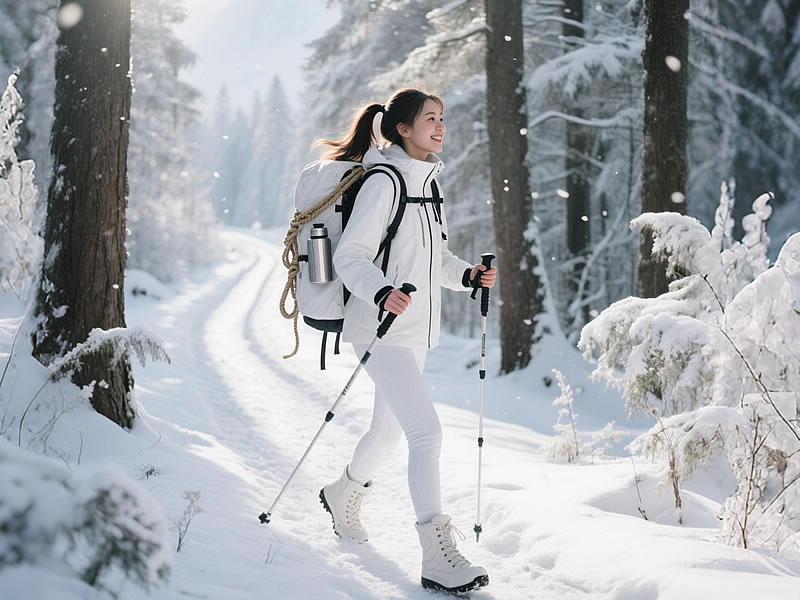Preventing joint failure in cold-weather aluminum trekking poles
Aluminum trekking poles are lightweight, durable companions for summer trails, but frigid temperatures can turn them into unreliable partners. Joint failure – sudden slippage, sticking, or catastrophic collapse – isn't just frustrating; it's a safety hazard on icy slopes or unstable winter terrain. Understanding why cold compromises aluminum joints and implementing proactive strategies is crucial for safe, successful winter adventures.

Why Cold Weather Attacks Aluminum Pole Joints:
- Material Contraction & Embrittlement: Aluminum contracts significantly more than plastics or composite materials as temperatures plummet. This differential contraction within the joint system (aluminum shaft vs. plastic/metal internal components) creates stress points and gaps. Crucially, aluminum becomes more brittle ("low-temperature embrittlement") below freezing, increasing susceptibility to cracking under impact or stress, especially at thin-walled joint sections.
- Ice: The Ultimate Lock or Saboteur: Moisture is the enemy. Condensation from breathing, snow contact, or even humidity can seep into joints. When this freezes:Expansion Jam: Ice forming inside mechanisms (like twist locks or internal collars) expands, jamming parts together or preventing full engagement.External Ice Lock: Ice buildup around lever locks or push-button mechanisms physically prevents them from moving or releasing.Lubricant Failure: Standard lubricants thicken or solidify in extreme cold, rendering mechanisms sluggish or immobile.
- Mechanical Stress Amplification: Winter travel often involves greater forces – punching poles through crusty snow, bracing against slips, supporting heavier loads with winter gear. Brittle, contracted aluminum joints are far less forgiving under this increased stress.
Proactive Strategies for Prevention:
- Pre-Trip Preparation is Paramount:Deep Clean & Dry: Thoroughly disassemble joints (if possible per manufacturer instructions). Clean all components with warm water and mild soap to remove dirt, salt, and old lubricant. Ensure absolute dryness before reassembly. Use compressed air cautiously.Cold-Specific Lubricant: Remove ALL standard oils/greases. Apply a minimal amount of dry silicone spray lubricant or a lubricant explicitly rated for extreme cold (e.g., some dry Teflon-based sprays). Avoid WD-40 as a lubricant; it attracts dirt and gums up. The goal is a thin, dry film – excess attracts grime.Inspect for Damage: Closely examine joints, locking mechanisms, and shafts for existing cracks, dents, or excessive wear. Address any issues before heading into the cold.
- Field Techniques for Reliability:Minimize Moisture Intrusion: Avoid submerging pole tips unnecessarily. Knock snow off the upper shafts before adjusting. When stopping, don't plunge the grip end into deep snow.Prevent Freeze-Up: Periodically break off any visible ice forming around joints or locks. Before adjusting, gently tap joints against your boot (not rock!) to dislodge internal ice. If a twist lock freezes, try carefully warming the joint area with your hands (inside gloves/pockets) – never use a stove or open flame!Gentle Adjustment: Avoid forcing stuck mechanisms. Apply gradual, steady pressure. For twist locks, sometimes a slight counter-twist before tightening can help. Ensure lever locks are fully snapped closed.Strategic Storage: During breaks, keep poles horizontal or grip-down to prevent meltwater running into joints. Overnight, store them inside your tent/vestibule, not buried in snow.
- Gear Choices Matter:Lever Locks (FlickLocks) vs. Twist Locks: Lever locks (external clamps) generally outperform twist locks in icy conditions. They are less prone to internal ice jams, easier to operate with gloves, and provide more tactile feedback on engagement. Twist locks rely on internal friction collars, which are highly susceptible to ice and lubricant failure.Material Consideration (If Buying): While aluminum is cost-effective and strong, carbon fiber composites are less affected by thermal contraction and don't suffer from low-temperature embrittlement. However, they can be more expensive and prone to catastrophic shatter under side impacts.Shielded Joints: Some poles feature rubber gaiters or shields over joints. While not foolproof, they can help deflect some snow and moisture.
Key Takeaways for Winter Pole Integrity:
Cold weather uniquely stresses aluminum trekking pole joints through contraction, embrittlement, and ice. Prevention hinges on meticulous pre-trip cleaning, drying, and applying cold-rated lubricant. Opt for lever locks where possible. Vigilance in the field – minimizing moisture ingress, preventing ice buildup, and adjusting gently – is non-negotiable. By understanding the science of cold failure and implementing these practices, you transform your aluminum poles from a potential liability into a dependable asset for every winter mile.






